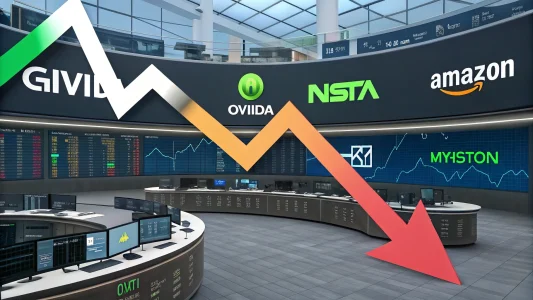Table of Contents
ToggleThe Foundation: Moving Beyond Pen and Paper
The journey toward automation begins with implementing a Customer Relationship Management (CRM) system. Without this digital foundation, businesses remain stuck in manual processes that waste time and miss opportunities.
A CRM enables businesses to categorize customers into various stages and execute automations based on their position in the sales process. This systematic approach helps identify and fix “leak points”—areas where potential sales fall through the cracks.
Here’s a 300-word section on “Content Marketing on Autopilot with ArticleX.com” without citations:
Content Marketing on Autopilot with ArticleX.com
The most sophisticated home service businesses are leveraging ArticleX.com to transform their existing content into a powerful lead generation system. This AI-powered platform solves a critical challenge: turning social media posts, videos, and podcasts into publish-ready articles that sound authentically like your business.
Richer emphasizes that home service businesses already create valuable content as part of their daily operations. Every training video you make for new technicians, every customer education session, every social media post explaining a repair—that’s content goldmine waiting to be repurposed,” he explains. ArticleX automatically transcribes and transforms this spoken content into well-structured, SEO-optimized articles complete with embedded media.
The system works by analyzing your video content, capturing key information, and automatically generating draft blog posts with featured images and embedded original videos. A single training video about furnace maintenance can be transformed into multiple articles targeting different seasonal keywords, all while preserving your unique voice and expertise.
The platform offers complete workflow automation—when content goes live on platforms like YouTube or social media, ArticleX automatically creates summary articles and publishes them as drafts to your WordPress dashboard. This means that every job site video or customer explanation becomes evergreen content, continually attracting new customers.
ArticleX’s AI is trained across various industries and automatically optimizes content for SEO best practices, including keyword research and proper heading structure. The result is a continuous stream of professional content that establishes your business as the local authority, all created from media you’re already producing during normal business operations.
The platform charges based on usage—5,000 tokens for every 10 minutes of content repurposed—making it scalable for businesses of any size. This approach transforms existing operational content into a sophisticated marketing system that works around the clock.
Calculating the True ROI of Service Business Automation
Most home service business owners resist investing in automation because they focus on upfront costs rather than long-term returns. Richer emphasizes that the real question isn’t whether you can afford automation—it’s whether you can afford to operate without it. When you look at what you’re losing by not having these systems, the investment becomes a no-brainer,” he explains.
Consider the mathematics of missed opportunities. A typical home service business might generate 100 leads per month but only convert 15% due to poor follow-up processes. With proper automation, that conversion rate easily jumps to 25-30%. For a business with an average job value of $500, improving conversion by just 10 percentage points generates an additional $5,000 monthly—$60,000 annually.
The time savings compound these returns dramatically. Field technicians spending 30 minutes daily on administrative tasks—such as scheduling, follow-ups, and estimate preparation—lose 2.5 hours weekly of billable time. At $100 per hour, that’s $250 weekly or $13,000 annually per technician. Automation systems that reclaim even half this time generate immediate returns while improving job satisfaction and reducing burnout.
Labor cost calculations reveal the hidden value of automation. Administrative staff spending 20 hours weekly on manual lead management, scheduling, and follow-up activities represent annual labor costs of $20,000-$ 30,000. Automation systems costing $3,000-$5,000 annually can handle 70-80% of these tasks, resulting in net savings of $15,000-$25,000 while improving consistency and reducing human error.
The review generation ROI deserves special attention. Businesses with 100 or more positive reviews typically charge a 10-15% premium price compared to competitors with fewer reviews. For a $500,000 annual revenue business, this premium translates to an additional income of $50,000-$ 75,000. Automated review systems costing $1,000-$ 2,000 annually that increase review collection by 15-20% often pay for themselves many times over.
Customer lifetime value significantly multiplies the returns from automation. Proper CRM systems and automated nurturing sequences don’t just convert more initial leads—they identify opportunities for repeat business, maintenance contracts, and referrals. A customer worth $500 initially might generate $2,000-$ 3,000 over five years through automated relationship management, which would be impossible to maintain manually.
Strategic Implementation: Building Your Automation Stack
Wise automation investment follows a strategic progression rather than random tool adoption. Richer recommends starting with the highest-impact, lowest-cost systems before moving on to more sophisticated solutions. This approach maximizes early returns while building operational confidence in automated processes.
The foundation tier focuses on lead capture and immediate response systems. Online booking platforms and automated lead acknowledgment emails typically cost $100-$300 per month, but they immediately improve the customer experience and capture leads that would otherwise be lost. These systems often pay for themselves within the first month through prevented missed opportunities.
The growth tier introduces CRM systems and basic nurturing sequences. Monthly investments of $200-500 enable systematic lead management, automated follow-up campaigns, and performance tracking. Businesses typically see a 20-30% conversion improvement within 90 days, generating returns that far exceed the investment costs.
The optimization tier features advanced capabilities, including AI-powered chat systems, sophisticated review generation, and integrated reporting dashboards. These systems, costing $500-$ 1,000 per month, primarily benefit businesses that generate consistent leads and want to maximize every opportunity. The returns come through incremental improvements—converting an additional 5-10% of prospects while reducing operational overhead.
Strategically financing automation investments prevents cash flow disruptions while accelerating returns. Many platforms offer monthly payment options that align costs with the revenue generated. Starting with free trials or basic plans allows businesses to prove ROI before committing to full-featured systems.
The key insight Richer shares is that automation investments should be viewed like equipment purchases—tools that generate income rather than operating expenses. “You wouldn’t hesitate to buy a truck that brings in $100,000 annually for a $40,000 investment,” he notes. Automation systems often generate better returns with much lower upfront costs.”
Measuring automation ROI requires tracking specific metrics: lead-to-customer conversion rates, average response times, customer lifetime value, and operational efficiency gains. Businesses that consistently monitor these metrics can fine-tune their automation investments for maximum returns while identifying opportunities for further improvements.
Online Booking: The Game-Changer
Richer identifies online scheduling as the number one automation hack for service businesses. “If you’re not doing online scheduling, I guarantee you’re missing out on jobs being booked,” he states.
The reasons are straightforward:
- Field technicians can’t answer every call while working
- Office staff may not book every potential job
- After-hours inquiries go unanswered
- Many customers prefer self-service booking options
Even businesses with variable pricing can benefit from online booking by offering consultation appointments rather than instant quotes. Some companies have discovered that referral partners can also utilize these systems, resulting in a streamlined process for business-to-business lead generation.
Automated Lead Nurturing
The most overlooked opportunity lies in following up on leads. When potential customers submit information, an immediate automated response helps build trust and signal professionalism.
Richer compares lead management to squeezing lemons: “A lot of times people get leads and they think of it as a lemon, and they just squeeze it one time and a little juice comes out and they say, ‘Okay, I need to get another lemon to get more juice.’ When really — if you keep squeezing that thing and try to get as much juice out of it as you can, then you move on to the next one.”
An effective lead nurturing sequence might include:
- Immediate confirmation of receipt
- Information about your company and services
- Case studies or testimonials
- Follow-up messages every few days
The key is persistence without being annoying. Many clients don’t respond immediately—not because they’re uninterested, but because they’re busy.
Estimate Nurturing: The Missing Link
Perhaps the most significant missed opportunity occurs after sending estimates. Many businesses create quotes that sit idle while they focus on running jobs and addressing customer needs.
Companies that implement estimate follow-up processes convert 20-30% more estimates simply by staying in touch. Adding expiration dates creates urgency: “If you put an expiration date on your estimates, like ‘Hey, these are good for 30 days,’ then as you’re nurturing that estimate, you’re like, ‘Hey, you’ve got 10 days left on this estimate. You still interested?”
Review Generation: The Growth Engine
Automated review requests may be the most critical automation for business growth. Companies with the most reviews often win the most business, yet many struggle to consistently collect them.
With proper automation and technician incentives, businesses should aim for a 10-20% review conversion rate. That means for every 10 customers served, at least one or two should leave a review.
Advanced businesses can even create automated reports that show which technicians generate the most reviews, fostering healthy competition and recognition.
The Next Frontier: AI-Powered Communication
For businesses that have mastered basic automations, AI tools like ChatGPT offer the next level of sophistication. These systems can handle common customer questions automatically, thereby further reducing the need for manual intervention.
When leads respond with questions about a service, AI can provide answers based on frequently asked questions, enabling the conversation to progress without human delay.
The home service industry is changing rapidly. Customers expect immediate responses, online booking options, and seamless communication. Businesses that embrace automation will find themselves with more time, more conversions, and ultimately, more profit—all without spending an extra dollar on advertising.
Featured Image Credit: Photo by RDNE Stock project; Pexels
















